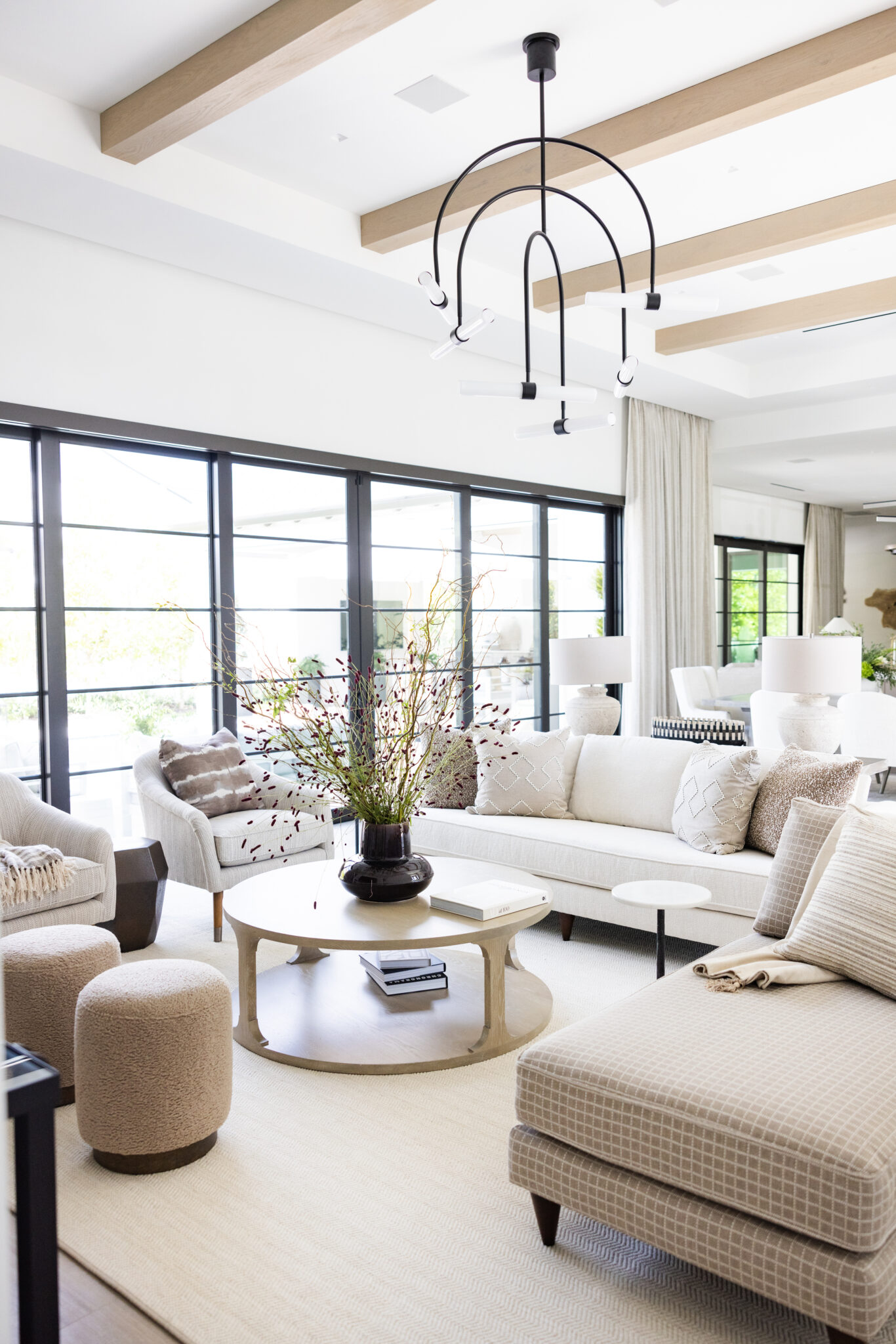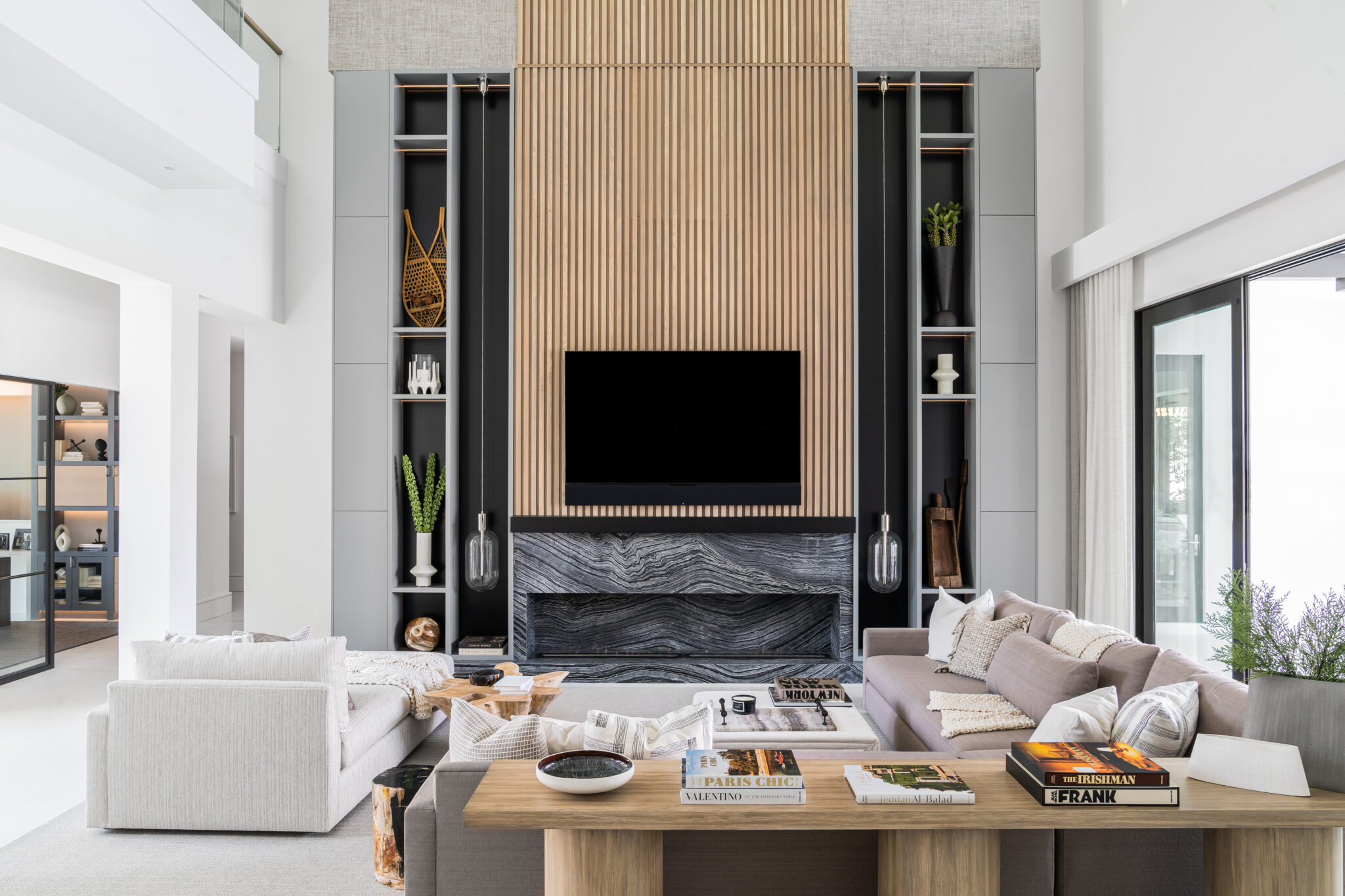Integrating Interior Design with Architectural Elements
Integrating Interior Design with Architectural Elements: Elevating Your Space
When interior design works together with architectural elements, the result is a cohesive and stunning space that reflects personal style and maximizes functionality. Rather than seeing architecture and interior design as separate disciplines, blending these two creates a unified look, ensuring that a space feels both well-thought-out and effortlessly beautiful. We work alongside architects to combine our expertise, creating the perfect balance.

Interior Design by Krista + Home. Photography by Eve Greendale.
Recognize the Architectural Framework
Before beginning the interior design process, it’s crucial to understand and appreciate the space’s existing architectural features. Elements like exposed beams, high ceilings, large windows, or original molding can become focal points and should be considered when selecting furniture, decor, and color palettes. These architectural details often tell a story about the property, and embracing them can add authenticity to the design.

Interior Design by Krista + Home. Photography by Jessica Glynn.
Emphasize Texture and Materiality
Architectural elements often come with distinct textures and materials, such as brick walls, concrete floors, or wooden beams. Rather than covering or disguising these elements, interior design should highlight and complement them.
Incorporating softer, contrasting materials like plush fabrics, rugs, and drapes can balance the rawness of industrial architecture. On the flip side, sleek and modern furniture might pair beautifully with traditional wood paneling or exposed brick, providing a fresh yet grounded, stylish contrast.

Interior Design by Krista + Home. Photography by Eve Greendale.
Design with Symmetry and Proportion in Mind
Interior design should always reflect the proportions of the architecture. A room with grand dimensions, such as a vaulted ceiling or wide-open floor plan, calls for furniture and decor that match that scale. On the contrary, a smaller space might benefit from a more minimalist approach, where every piece is carefully selected to prevent overcrowding.
Symmetry, too, plays a vital role in bridging interior design with architecture. Pairing furniture and decor in a balanced, symmetrical arrangement complements the existing architecture, making the space feel harmonious and visually pleasing.

Interior Design by Krista + Home. Photography by Venjhamin Reyes.
Get Creative with a Focal Point
One of the most impactful ways to integrate interior design with architecture is by creating a focal point that draws attention to a key architectural element. Whether it’s a stunning fireplace, a statement staircase, or a dramatic vaulted ceiling, the focal point becomes the anchor of the room’s design.
By building the design around this architectural feature, you ensure that it remains the star of the space. Complement it with strategically placed furniture, art, or lighting that emphasizes the feature without overwhelming it. The goal is to enhance the architectural focal point, making it the room’s heart.
Harmonizing Design and Architecture
Incorporating architectural elements into interior design is about more than just aesthetics—it’s about creating a unified and intentional space. By embracing the inherent qualities of a space’s architecture and integrating design that complements those elements, you create a home that feels functional and uniquely personal.
Understanding how to merge these two worlds is key for interior designers, who must deliver extraordinary results that transform any space into a masterpiece.

